Cherbourg, or as it is known officially Cherbourg-Octeville (after having merged with its neighbouring town), can be described as “quaint”. That’s the word I would use if I were to be positive. The real words that come to my mind are “drab”, “rundown” and “uninspiring”.
NOTE: Click on the top photo for a bigger panorama photo of Cherbourg. The big white building in the middle is a shopping centre.
The city’s origin can not be established, but the first descriptions of the area were found dating back to the year 365 AC. A large Celtic settlement had lived in the area for centuries and then it was taken over by the Romans.
Cherbourg is world’s 2nd largest artificial harbour (1,500 hectares, the biggest harbour is the one in Qatar with 4,500 hectares), and the city is dominated by its harbour infrastructures and water. Water is everywhere.

Cherbourg is know today for its ferry crossings to the UK since it has the 2nd shortest distance to the UK from France (the shortest being Calais). It also has ferry crossings to Ireland and Jersey.

You will find many different kinds of harbours alongside the city centre, ranging from pleasure crafts to deep-sea fishing trawlers harbours… There are also shipyards, and several docking facilities, the most important ones being those of the large cruise ships that come here (including the Titanic, Queen Elizabeth 2 – QE2 and Queen Mary 2).

The areas for the commercial fishing boats have their associated storage facilities located close to the docks. It is a hive of activity, day or night and one of the few remaining industrial activities of Cherbourg (although there are still a few manufacturing industries around, they are losing grounds over the years).
Several bridges over the different harbours and waters have been built enabling the citizens to quickly go from one part of the city to another. Many of these bridges are recent, and all open up for the imposing vessels coming or leaving for the sea.
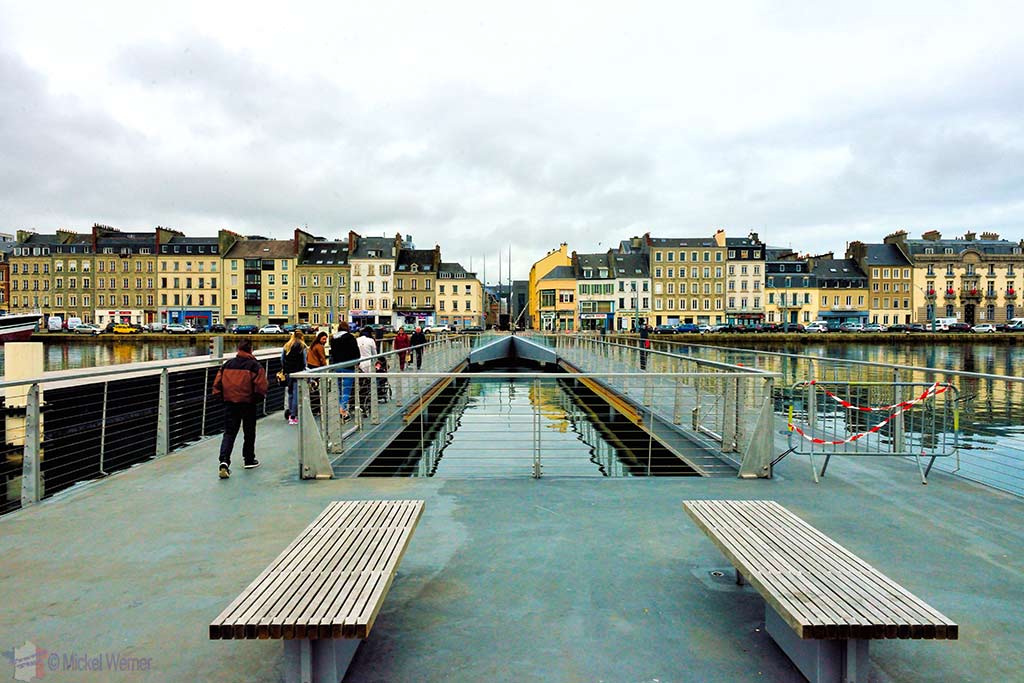
The harbour construction started in 1783 by King Louis XVI and Marshal Vauban and it had, and still has, a part of the French Navy stationed here. Some 13 French Navy ships are located here, but over time Cherbourg has lost its strategic naval importance.
The 2nd World War however made Cherbourg a very important and strategic part of the war efforts for both sides of the war. More about that later on.
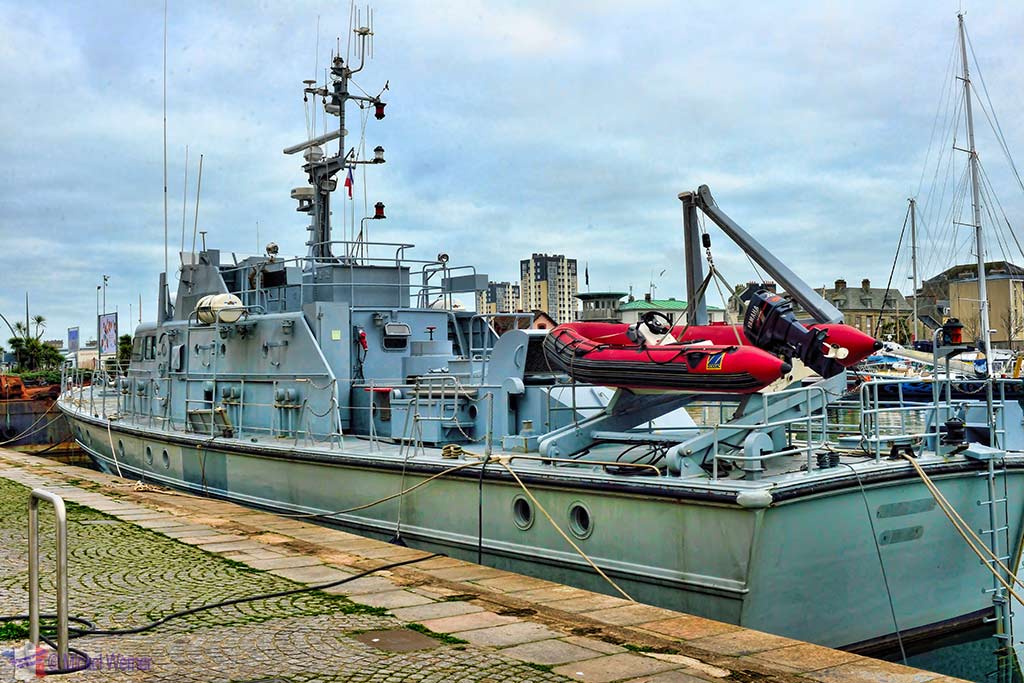
There are 5 fortresses dating back to 1806 located outside the harbour, placed to defend the harbour from the English and pirates. Several of these forts can be visited during the tourist season by sightseeing boat (one got totally destroyed during WWII).
In 1802 Napoleon had also ordered an update of the harbour in order to prepare the invasion of England, but the invasion never happened. But nevertheless, Napoleon had an affinity with the city as you will see further on.
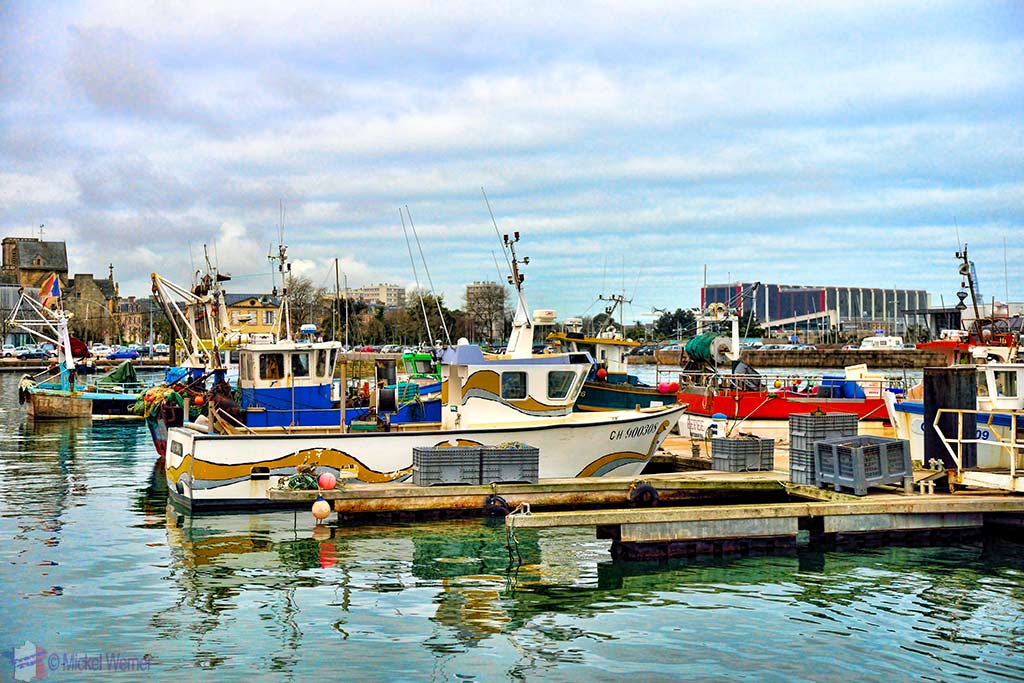
As far as you can look, the harbour waters are visible since the entrance of the harbour is much further away, surrounded by dikes and the 5 fortresses. Towards the end of the harbour, before the dikes, you will see a massive building with a green roof:

The massive building is the “Cite de la Mer” museum, one of the few bits in Cherbourg that merits a visit to the city. In fact, the museum merits a detour just to see it. It is located next to the ferry harbour.
More about this incredible museum on our site: click here to read and see more about this amazing museum.
Walking alongside the harbour, I noticed this lock.
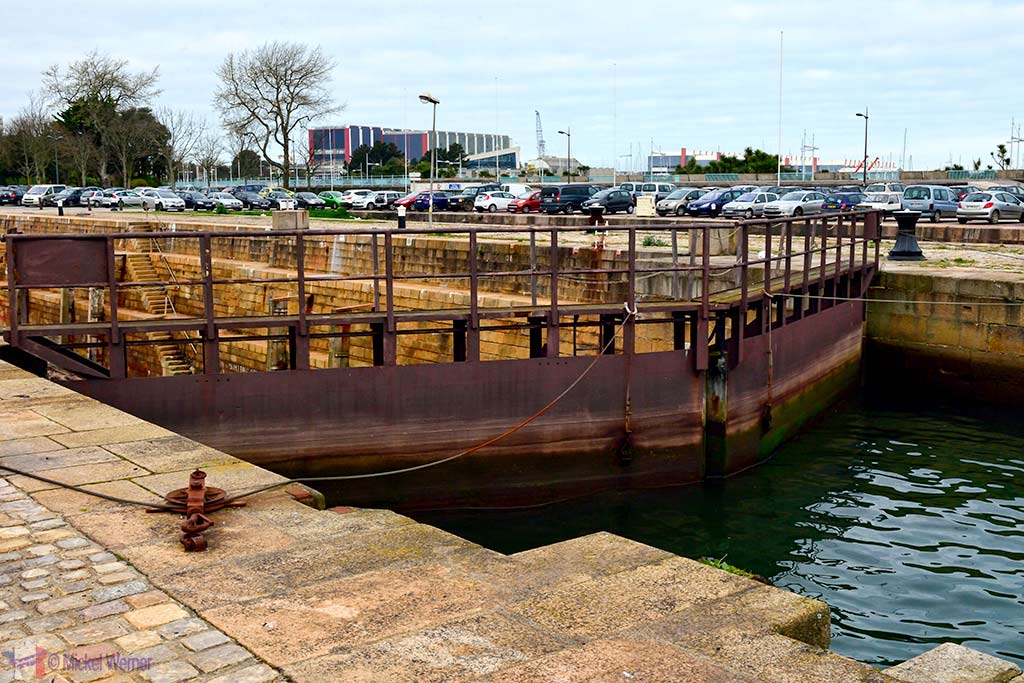
A little further, you will see what the lock is for…

… it’s a dry-dock. Ships come in when it is filled with water, then the water is pumped out and workers can maintain and work the hull of the boat without the need to dive.
Basilica of Saint-Trinite
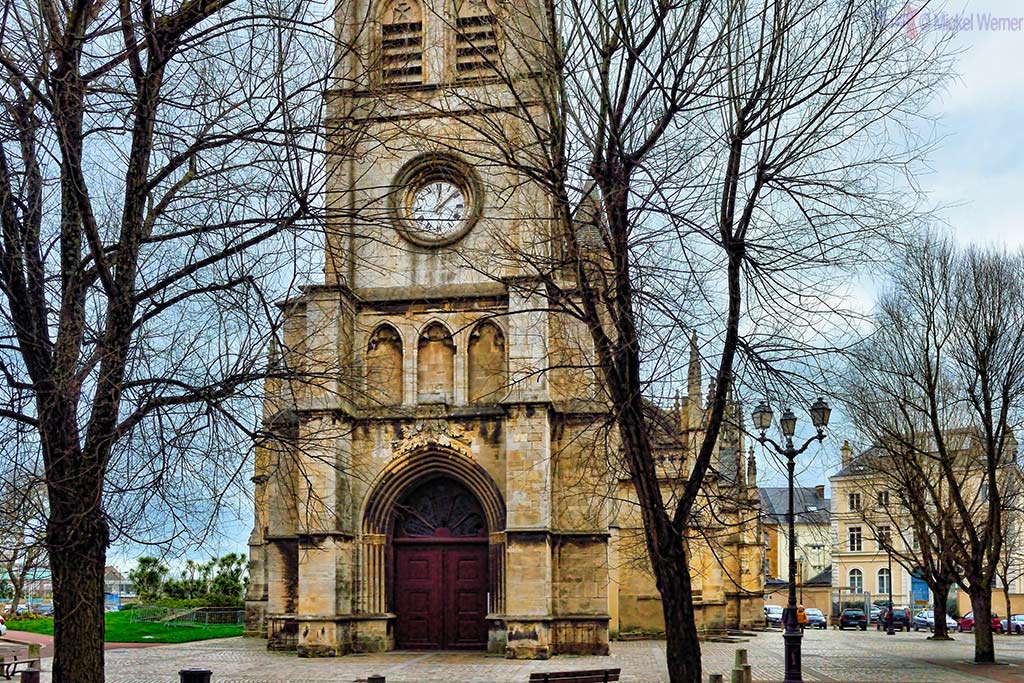
One of the main religious buildings of Cherbourg is the Basilica of Saint-Trinite, the initial church built in the 11th century on request by William the Conquer. Until the 19th century, the church was the only parish church of the town and only a few were built afterwards.

Over the centuries it has been destroyed and rebuilt several times, reusing parts of the building that survived. In 1865 it received the last updates. All-in-all, Cherbourg “only” has some 6 churches, compared to other similar sized cities where 10 to 15 seems to be the norm.
Standing on the other side of the road in front of this church you will find this enormous statue:
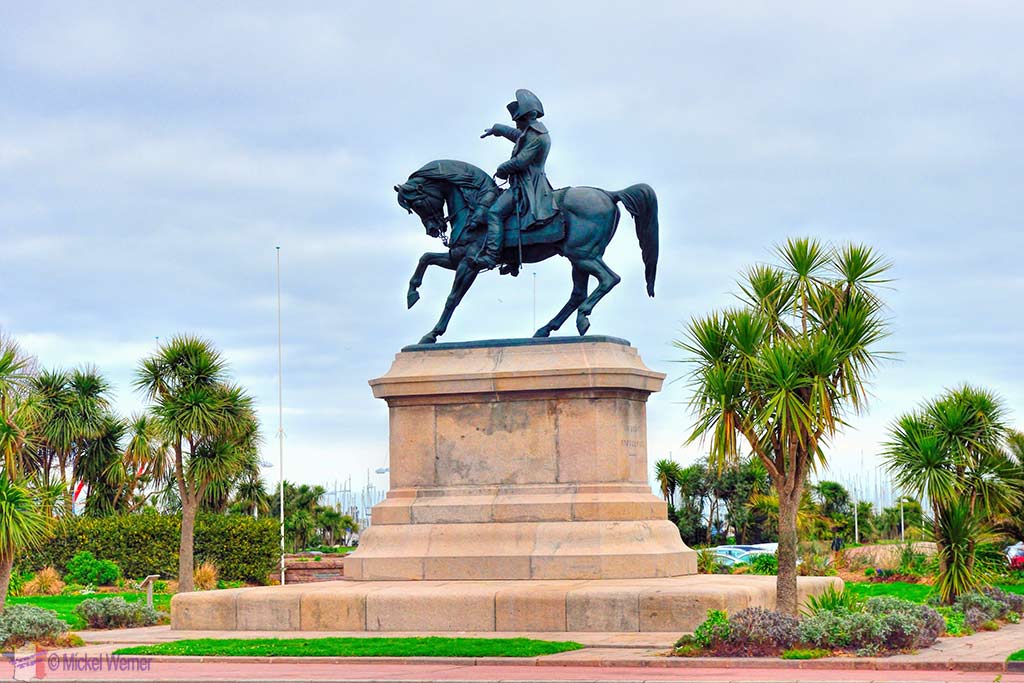
It is a statue of Napoleon I riding a horse. The inscription on the statue says “I had resolved to renew to Cherbourg the wonders of Egypt“. It addresses his vision at the time of making Cherbourg an enormous harbour full of military might. The statue was erected 1858 when Napoleon III came and visited the city.
Walking this city, you will not see many fancy buildings or such, but I was pleasantly surprised with the following:
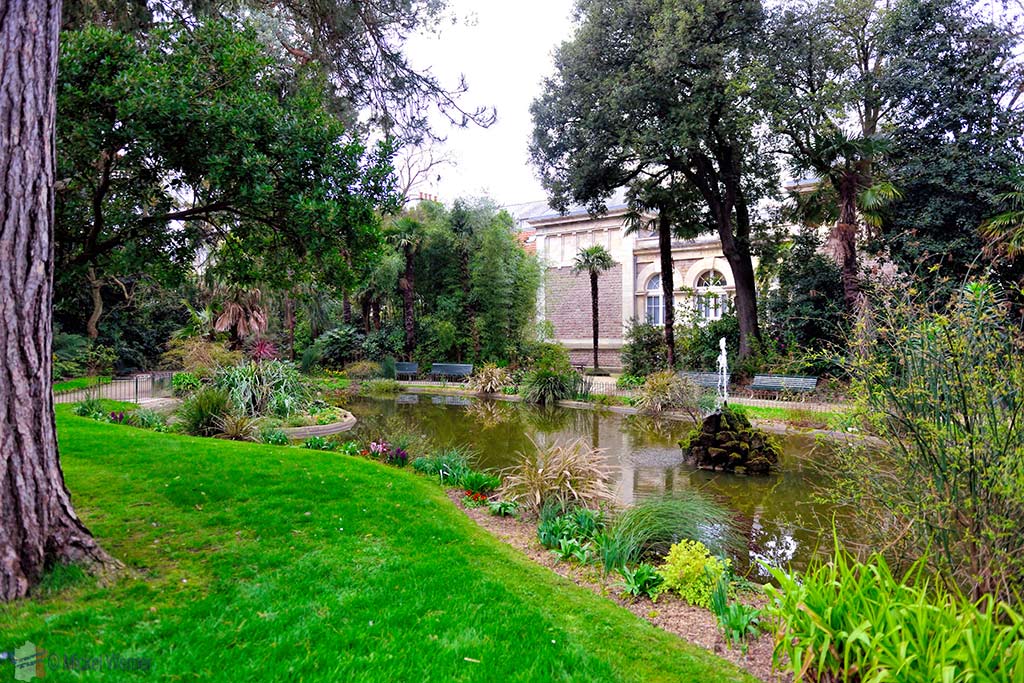
It is the Emmanuel Liais Park with some 1 hectares (2.5 acres). It is the former garden of the Mayor of Cherbourg’s house, which was designed in 1881 and opened in 1885.
Emmanuel Liais (15 February 1826–5 March 1900) was a French astronomer, botanist and explorer who spent many years in Brazil and who had become the Mayor of Cherbourg.
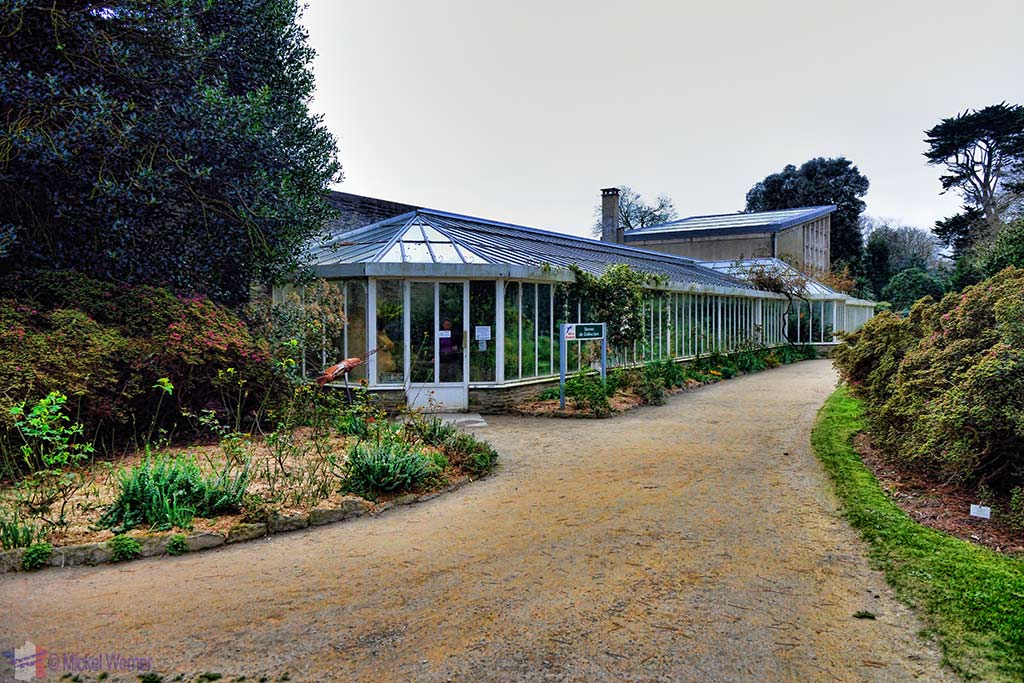
He designed the gardens and then bequeathed to the city the whole garden, including an observation tower, a small pond containing water lilies and other water plants and two greenhouses containing rare plants he had collected during his travels.
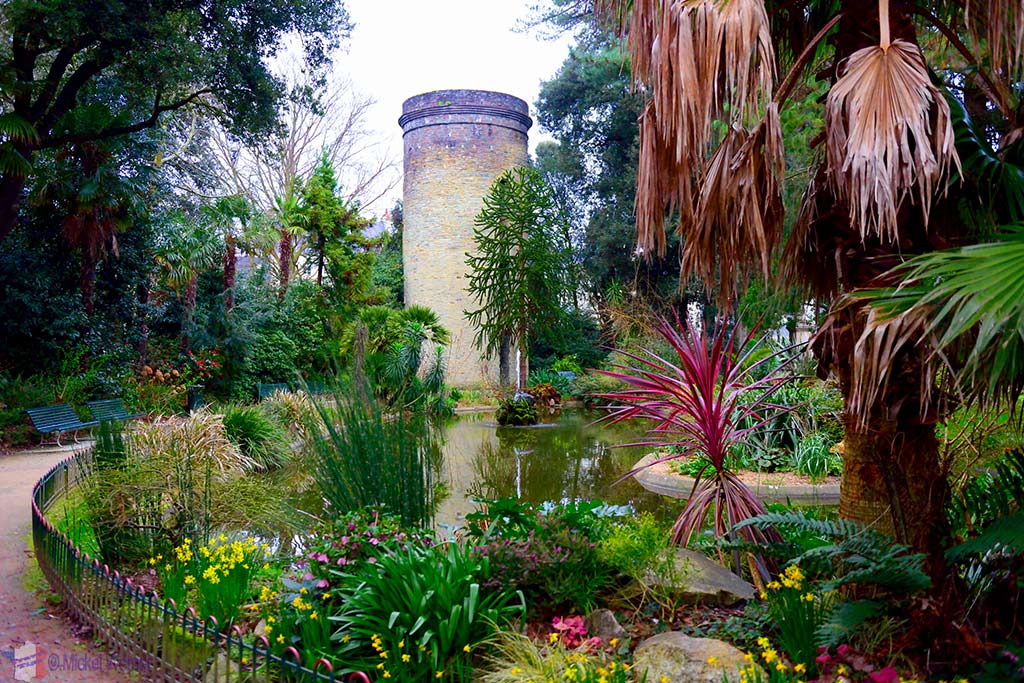
Walking in this small park is amazing. It is well designed and maintained, giving a feeling of rest and zen.
But walking the streets of the city is not very rewarding. Do not expect to find some grandiose buildings.

Many buildings are either badly maintained, dirty or falling to bits.

Neither will you see many public parks. Apart from the one described above, which was very nice, I only saw one other public park:

At the entrance they had this rather larger World War monument, highlighting all the parts of the world which had been at war and where French soldiers had died.
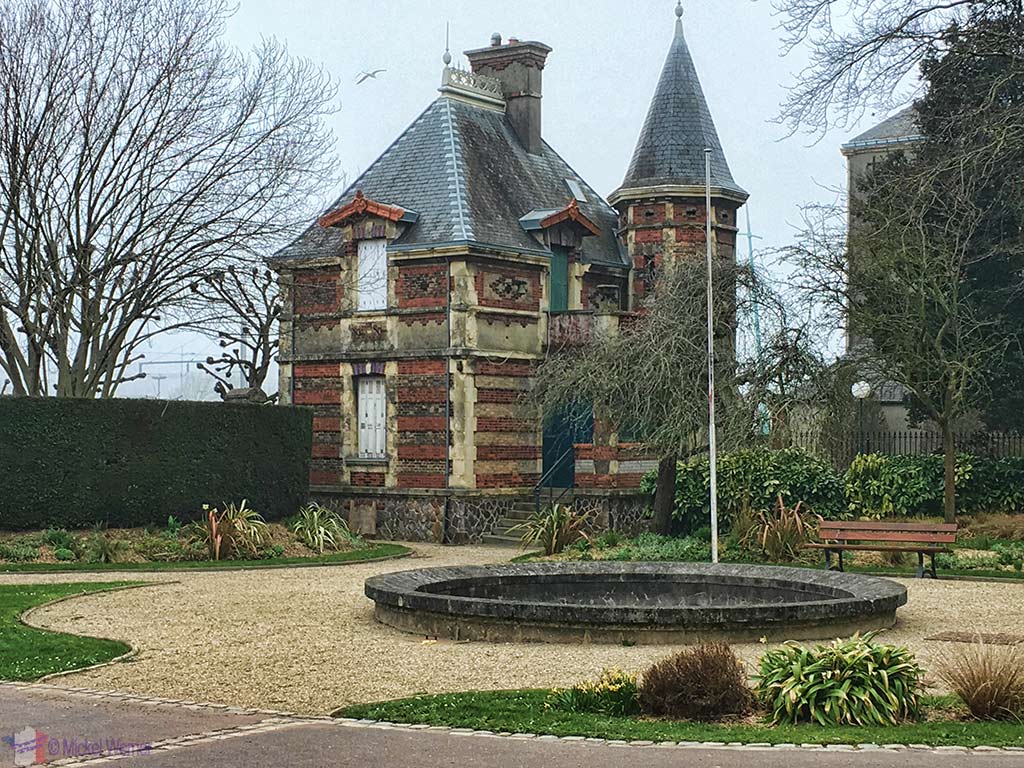
The only interesting part of the gardens were these (what I believe to be) groundkeepers’ house.
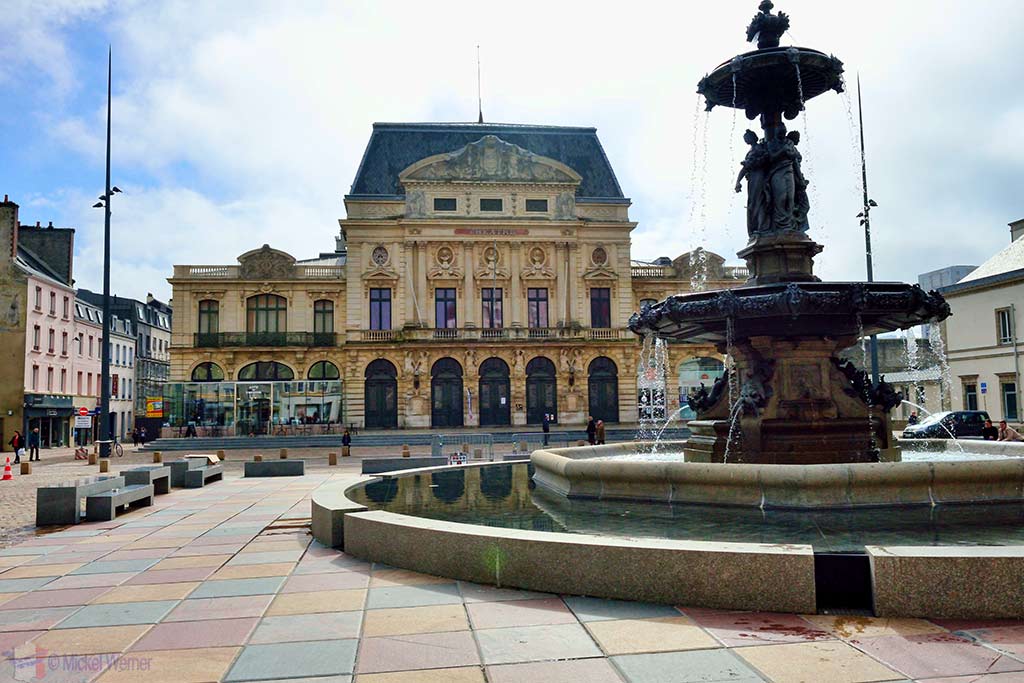
In the main square in the city centre you will find this fountain (built in 1895) and behind it the theatre named “Le Trident”. It was built in 1880 and was the last “Italian Theatres” built in France.
One other item that can be of interest to visit if you are in the city:

This is the Umbrella factory & museum of Cherbourg. It might not mean much to you, but movie buffs might remember the famous French movie “The Umbrellas of Cherbourg” starring Catherine Deneuve. The 1964 movie was even nominated for several Oscars (but didn’t win any).
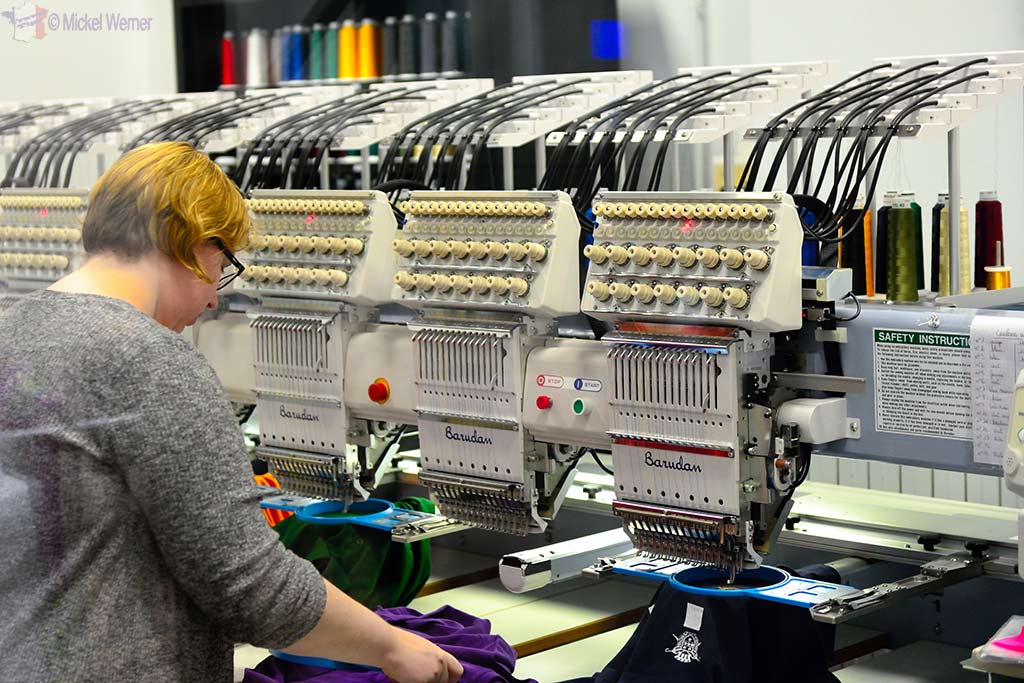
The movie even inspired the now famous movie “La La Land”, and yes, there is actually a real Cherbourg Umbrella brand. You can visit the factory which is located alongside the main quai and see how these umbrellas are still handmade. However, the brand was created AFTER the movie….
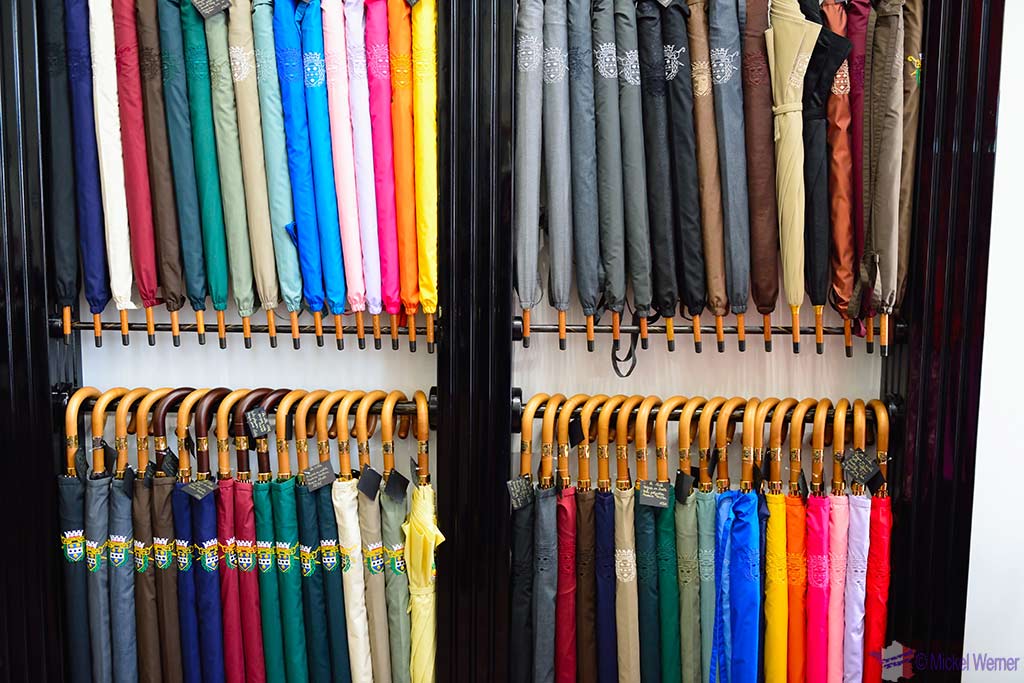
The handmade umbrellas can be purchased in the gift shop of the factory.
Click here to visit the Real Umbrellas of Cherbourg web site.
Cherbourg and World War II
Cherbourg saw a lot of action during WWII. Field Marshal Rommel captured the city (after the French sunk several of their new submarines which were being built in the shipyards) and fortified the city. He placed large canons on top of the hill overlooking the harbour.
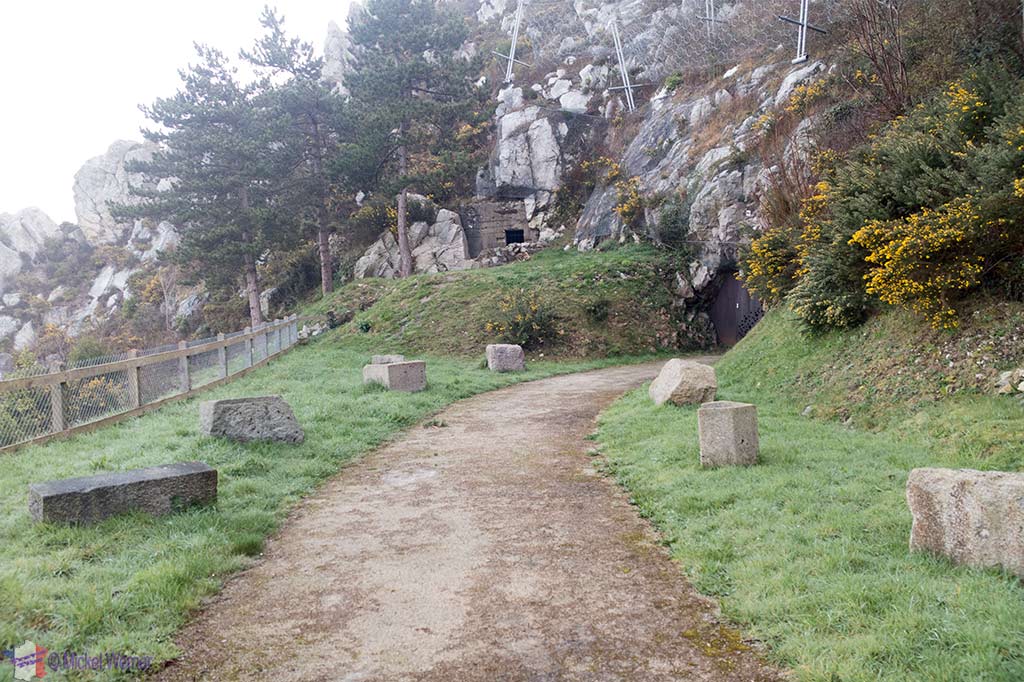
When Operation Overlord started (D-Day), Cherbourg was an extreme strategic target for the Allied forces since they needed a large harbour to resupply and reinforce the battle front.
It were the American who liberated the city after having landed in the Utah Beach during D-Day. After landing and sustaining heavy losses, the US army turned towards Cherbourg and after a month long street-to-street battle took control over the city. Unfortunately, the Germans had blown up most of the harbour, and a lot of repair work was required before the first Liberty ships could arrive with fresh troops and supplies. eventually the Allies even placed an underwater oil pipeline between the UK and Cherbourg.
Walking the city, it is not unusual to see signs such as this one:
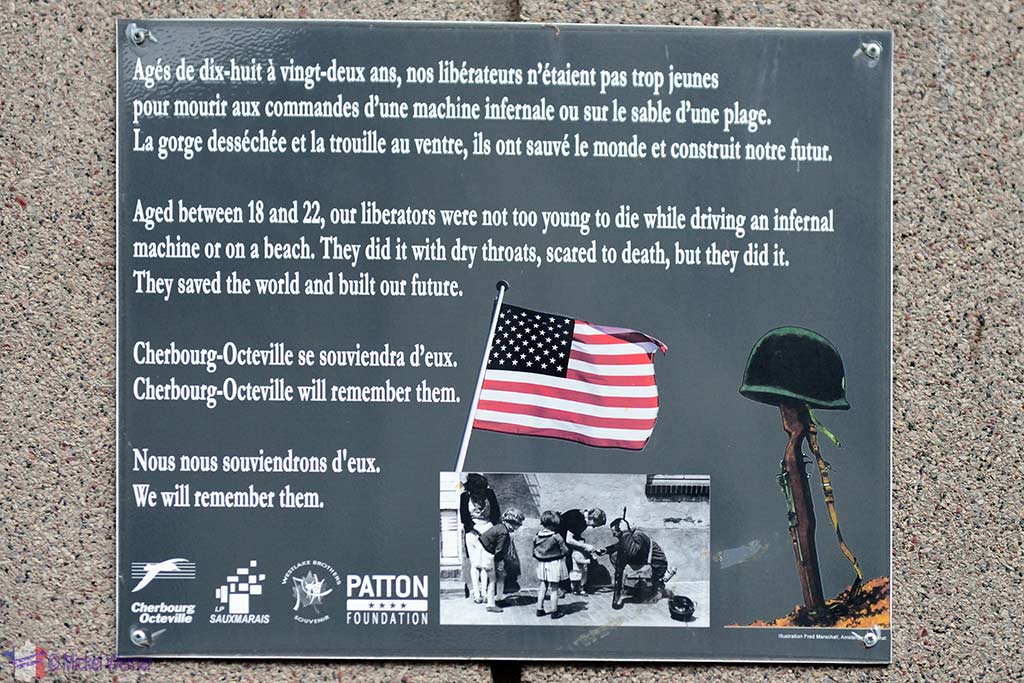
Cherbourg Ferry
Since Cherbourg is very close to the United Kingdom, there are several daily ferries that go to the UK, but also Ireland and the close-by Jersey islands.
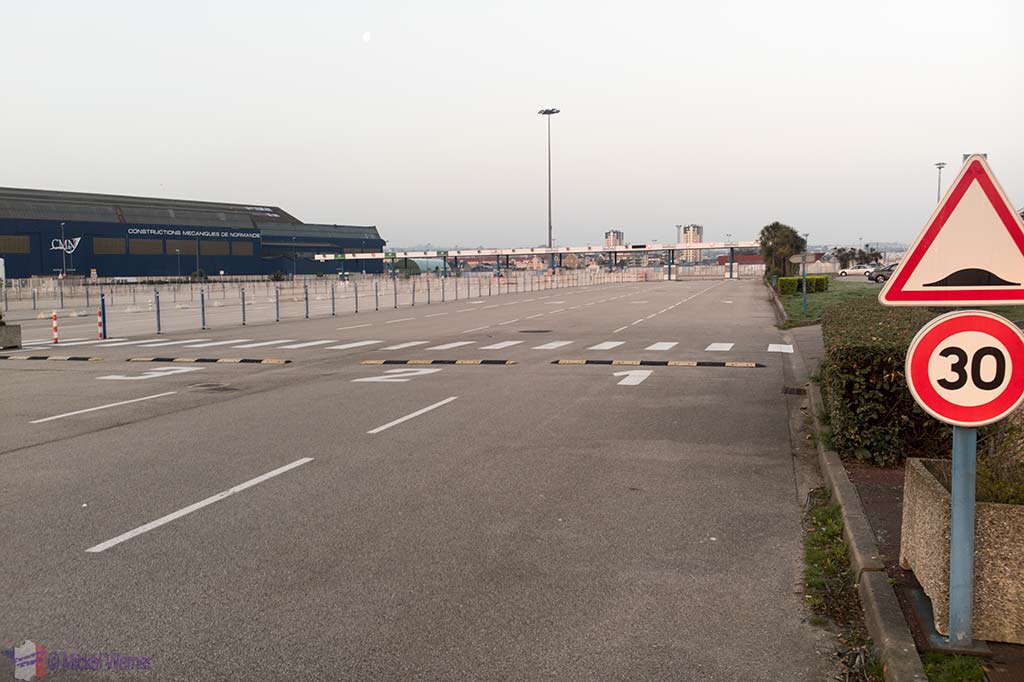
And for those that can not wait for some English style food ….:
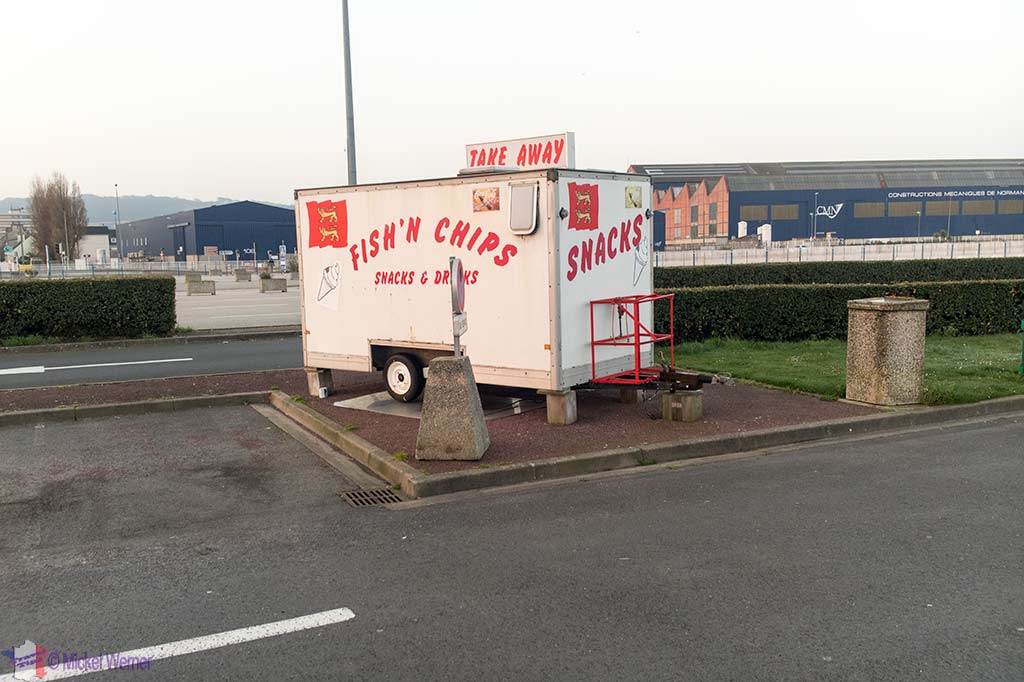
… a “chipper” van is placed at the waiting area.
Lighthouse – Phare du fort de l’Ouest
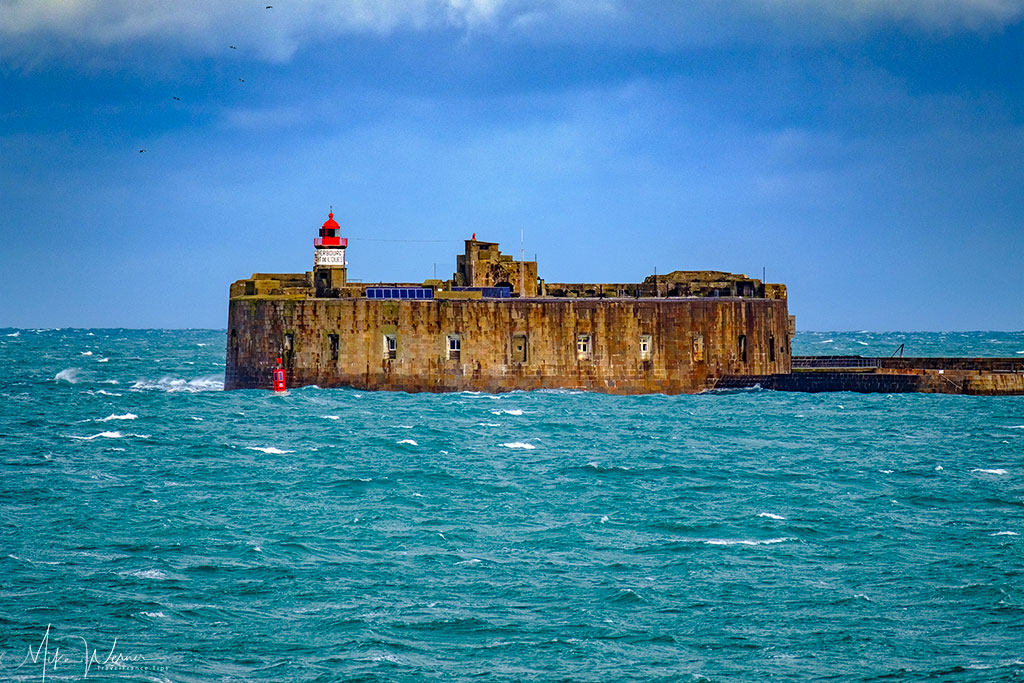
The harbour entrance is protected by 8 fortresses joined to the land by a very long seawall.
The fortress of the left, called “fort de l’Ouest” (fortress of the East), has a lighthouse showing the way for ships. The lighthouse is called appropriately “lighthouse of the fortress of the East”, and measures 9.4 meters high.
The lighthouse was built in 1840 but badly damaged during WWII.
Cherbourg and Artists
Here are the artists we found who worked in Cherbourg. A link “⇠” will show when that artist’s works has been published on our site. A “*” indicates that the artist did not work in Cherbourg itself, instead worked in nearby places.
- 🇺🇸 Boggs, Frank Myers * ⇠
- 🇷🇺 Bogolyubov, Alexey (Alexei) * ⇠
- 🇬🇧 Bonington, Richard Parkes ⇠
- 🇫🇷 Boudin, Eugene-Louis ⇠
- 🇫🇷 Bourgeois, Constant ⇠
- 🇬🇧 Bruce, Mary Louisa, Countess of Elgin and Kincardine ⇠
- 🇬🇧 Cotman, John Sell ⇠
- 🇫🇷 Crepin, Louis-Philippe ⇠
- 🇫🇷 Friesz, Othon ⇠
- 🇫🇷 Garneray, Ambroise Louis ⇠
- 🇷🇺 Gritsenko, Nikolai ⇠
- 🇫🇷 Gudin, Theodore ⇠
- 🇫🇷 Le Gray, Gustave ⇠
- 🇬🇧 Leitch, Richard Principal ⇠
- 🇫🇷 Mathon, Emile-Louis ⇠
- 🇫🇷 Matisse, Henri ⇠
- 🇫🇷 Mozin, Charles Louis ⇠
- 🇫🇷 Noel, Jules Achille ⇠
- 🇫🇷 Signac, Paul ⇠
- 🇧🇪 Timmermans, Louis-Etienne ⇠
- 🇬🇧 Turner, William * ⇠
Conclusion
Visiting Cherbourg is not a must. Obviously if you need to take the ferry, you will not have that much choice (apart from Calais, Dieppe, Le Havre and Caen / Ouistreham). As for seeing things while you are waiting for a ferry, there is not much to see. The Cite de la Mer is the only thing that is really worth it, and it is even worth a detour if you are in the neighbourhood.
The city has bet a lot on the manufacturing industries and shipyards, but both have trickled down to almost nothing, so un-employment is high and money is low. Pity.
Related Posts
- 10000
- 10000
 Transport Getting There Railway station of Cherbourg There is a direct rail line Cherbourg - Paris which makes getting there easy and fast if you are arriving from the capital. By Air Cherbourg has a small airport (Maupertus Airport) but there are no scheduled flights in or outside of France. It is…
Transport Getting There Railway station of Cherbourg There is a direct rail line Cherbourg - Paris which makes getting there easy and fast if you are arriving from the capital. By Air Cherbourg has a small airport (Maupertus Airport) but there are no scheduled flights in or outside of France. It is… - 10000
- 10000
 Normally speaking the village of Sainte-Mere-Eglise should mean nothing to most people. Unless you are a WWII buff or a movie buff. The movie in question is "The Longest Day" starring none other than John Wayne trying to get to Sainte-Mere-Eglise during D-Day. The village itself nowadays consists of some…
Normally speaking the village of Sainte-Mere-Eglise should mean nothing to most people. Unless you are a WWII buff or a movie buff. The movie in question is "The Longest Day" starring none other than John Wayne trying to get to Sainte-Mere-Eglise during D-Day. The village itself nowadays consists of some… - 10000



